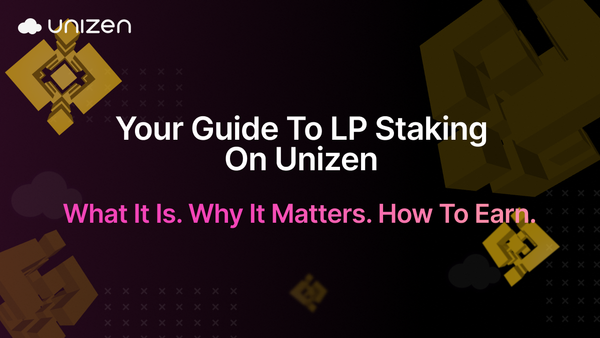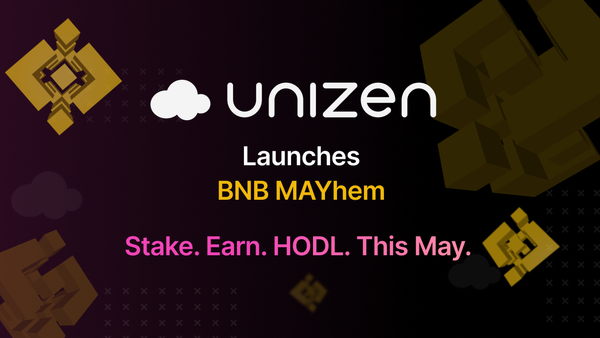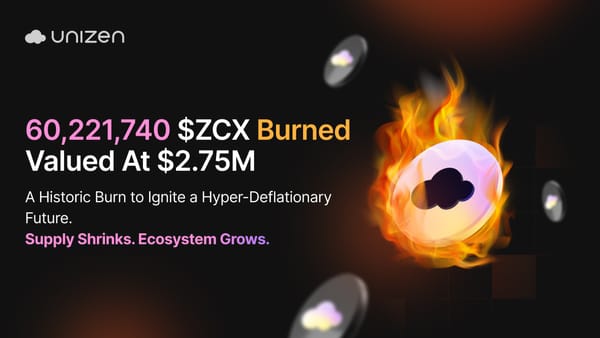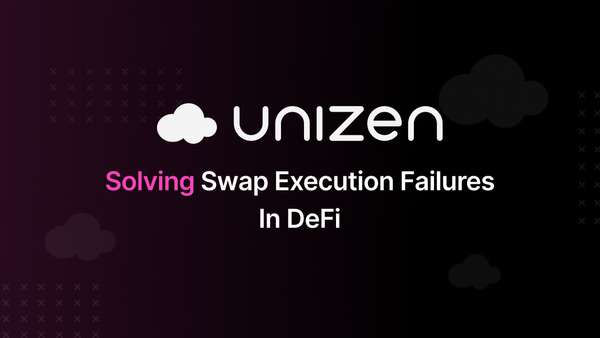What Is A Gas Fee In Crypto? Understanding Transaction Costs on Blockchain
Learn about crypto gas fees: factors, reduction strategies, and future outlook for Ethereum and blockchain networks. Optimize transactions and costs.

Cryptocurrencies are extremely popular, and understanding their mechanics can be pretty difficult. Anyone looking to navigate the crypto world, especially Ethereum network users, must understand the concept of “gas fees.” Gas fees are the transaction costs you pay to use a blockchain network, it measures the computational effort required to execute operations. This fee is essential because it pays for miners or validators in the network to verify the transactions, thus keeping the system secure and running smoothly.
In this article, we will discuss what gas fees are in crypto, explaining their role in blockchain networks, the importance of gas fees in facilitating transactions and securing decentralized platforms, and how factors influence these fees.
Understanding Transaction Costs on Blockchain
In the context of blockchain, gas is a measure of computational work that has to be done for any operation on-chain. Every action, from a simple token transfer to smart contract executions, even to an NFT mint, requires some form of computational power; hence, gas is a ‘fuel’ for powering such actions on the blockchain.
Rather than measuring minutes or the quantity of work performed, gas is measured in units, each unit of gas representing the complexity and resources that should be expended for a particular action. The more complex the transaction, the more gas units it requires. For example, transferring ETH from one address to another normally consumes less gas than executing a smart contract, as smart contracts involve more complex computations.

Why Are Gas Fees Important?
Gas fees are necessary on the blockchain for several reasons, including the following:
1. Securing the Network
On most Ethereum Blockchain platforms, the gas fee serves and contributes a little more to securing the blockchain network. Every single transaction in the process requires computational resources, and that power is provided by miners on Proof-of-Work blockchains or validators on Proof-of-Stake blockchains. Miners are paid with gas fees in return for computational work. The incentive mechanism here is devised so that there will always be a set of motivated participants to validate transactions and keep the network secure. Without the gas, the motivation would not be there to commit the resources these individuals or entities need to maintain a decentralized and secure system.
2. Prioritizing Transactions
Gas fees play an important role when the network gets congested, as it prioritizes which transaction needs to be processed. The users who set higher fees get their transactions processed faster, while those paying lower fees may face delays in their transactions. It is even more relevant on busier networks, where millions of users are potentially trying to make transactions simultaneously. Adding a dynamic fee structure to it, gas fees may be used as an optimal resource allocator with fairness though competitive. Without them, the system would not manage network congestion; thus, delays in all transactions and impacting overall efficiency are impossible.
3. Preventing Network Spam
Free transactions could lead to misuse and spam on the blockchain. Bad actors may fill the network with unnecessary transactions, leading to network bloating and delays. Gas fees introduce a partial cost for any transaction, making it economically impossible for spamming agents to clog the network. It is this price barrier that keeps most of the low-value or unnecessary transactions from going into validation.
How Gas Fees Are Calculated
Gas fees are often calculated based on two factors: Gas limit and Gas price.
Gas Limit
The gas limit is the maximum number of gas units a user is ready to process his transaction. It represents the complexity and resources used when the transaction is being processed. Setting proper gas limits is very important because:
- A gas limit that is too low might run out of gas and will fail the transaction, with the user losing that fee paid.
- If the limit is set high but not all the gas is used, the unspent gas gets refunded to the user.
For example, a simple transfer of ETH from one wallet to another would take about 21,000 gas units. However, complex transactions, such as an interaction with a DApp or the execution of a smart contract, would have a far higher gas fee limit, given the increased amount of computation involved. Setting a gas limit ensures they know the maximum fee they want to pay for the transaction and avoids cases where complex operations require unreasonably high fees.
Gas Price
Gas price is the price a user pays per gas unit, measured in Gwei. The gas price changes depending on the network's demand. This means that the gas price goes up when more users try to perform some transaction over the network.
Therefore, the formula for calculating Gas Fee is:
Gas Fee=Gas Limit × (Base Fee + Priority Fee)
The Base fee is the minimum value a user must pay for their transaction to go through, while the Priority fee, also called tip, is an additional fee that users pay to incentivize miners to mine their transaction ahead of others.
Denomination of Gas Fees on Ethereum
The gas fees on Ethereum are also measured in Gwei, a small denomination of Ether (ETH). One Gwei equals 0.000000001 ETH or one billionth of an ETH. It is a very tiny unit; hence, it is easy to represent and calculate gas prices with it since most applications require the number of gas fees often for transactions to be fractions of ETH and not whole portions.
For example, if the price of the gas is 20 Gwei per unit and a particular transaction takes 21,000 gas units, then the total fee paid this time will be calculated as below:
20 Gwei x 21,000= 420,000 Gwei
Converting this to ETH: 420,000 Gwei is equivalent to 0.00042 ETH.
Due to Gwei, Ethereum can represent its gas price per unit in a manageable format. This makes it easier for users to understand exactly how much each particular transaction will cost them and plan their activities based on this.
Factors Affecting Gas Fees
Gas fees change due to several factors in the blockchain. They are easily understandable, so users might schedule their transactions at the right time, saving them in both ways—because, of course, time is money. The basic factors influencing gas prices include network congestion, the complexity of the transaction, and the market forces affecting overall demand.
1. Network Congestion
One of the most significant factors affecting current gas fees is network congestion. Whenever there is high activity on the network, such as popular token launches, NFT drops, or other large-scale market events, many users try to execute transactions at all costs and at once. This puts pressure on demand since users want to process their transactions quickly.
When the network is congested, the base and priority fees will be higher. Some users set a higher gas price to prioritize their transactions, further driving up the cost for everyone. Therefore, one of the most effective ways to avoid high gas fees is to wait until periods when the network is less busy. By monitoring network activity and using tracking tools, it will be easier to predict congestion levels, which will help avoid costly transactions.
2. Transaction Complexity
The more complex a transaction is, the more gas required it needs to be executed. Basic transactions, such as transferring ETH between wallets, involve relatively few computations and thus use fewer gas units. On the contrary, more complicated transactions involving smart contracts or decentralized applications require more computational resources and hence request more gas.
3. Market Dynamics
Market dynamics are one of the important determinants of gas prices in cryptocurrency. The balance between demand and supply regarding a network's processing power always influences gas prices. If the demand for processing power for transactions is high, gas prices increase as miners or validators adjust priorities to maximize revenues from transaction fees. Whenever less activity occurs across a network, gas prices tend to go down as competition for block space reduces.
In addition, general market fluctuations (e.g., a rise or fall in the prices of cryptocurrencies), the release of new projects, or any form of regulation can also impact demand for blockchain transactions. As more users come into the market and big projects go live, volumes can increase and drive up gas fees. Knowing the market conditions at any given time helps users know when it is a good time to make transactions, which could save them a lot.
Gas Fees Across Different Cryptocurrencies
While Ethereum is the blockchain most associated with gas fees, it is not the only network where users pay fees to process transactions. Different cryptocurrencies employ a variety of fee structures to incentivize and reward network participants. Let’s look at how Ethereum's gas fee system works against Bitcoin and other blockchains to see how a transaction cost functions across networks:
Ethereum’s Prominent Use of Gas Fees
Ethereum popularized the concept of "gas" to denote the computational effort needed for performing operations on its blockchain. Every transaction and action, including transferring Ether ETH or interacting with smart contracts, requires a specific amount of gas. The Ethereum gas fee model allows for flexible and dynamic pricing since the fees are determined by network demand, the complexity of the transactions, and the base fee structure.
Comparison with Bitcoin and Other Blockchains
Bitcoin doesn't use the term "gas" and instead has a more straightforward transaction fee model. Bitcoin transaction fees depend on the size of the data. In other words, the bigger the transaction size (measured in bytes), the higher the fee applied, and the smaller ones are cheaper.
Although Ethereum's gas-fee model was designed to accommodate flexibility in handling a variety of activities, such as running DApps, Bitcoin's fee structure focuses on securing the network and processing financial transactions. Users can still prioritize their transactions by choosing higher fees, but Bitcoin fees are more predictable and fundamentally shift with changes in network congestion.
Other Blockchains with similar or different fee structures
Other blockchains take a different approach to transaction fees, often optimizing for much lower costs or faster processing times. Here are some examples:
- Binance Smart Chain: BSC implements a gas fee model similar to Ethereum but at a reduced charge. This is because it works on shorter block times with more centralized validators. Due to this, BSC gained popularity among users who wanted to use Ethereum-compatible services but at lower costs.
- Solana: Solana’s structure allows it to have very low fees for sending transactions. Its consensus is different; it uses Proof of History (PoH) and Proof of Stake (PoS). This helps in high transaction throughout, thus scalability with minimal fees.
- Polygon: Although considered an Ethereum scaling solution, the gas-fee model also applies to the transactions occurring on it, which is just a fraction of the cost. It is EVM-compatible; hence, users can work their way out with Ethereum-like applications at much lower gas costs.
- Polkadot and Cosmos are other blockchains based on novel consensus models that enable interaction between blockchains. On Polkadot, the fee model is dynamic and subject to network use and parachain activity; Cosmos uses a staking-based fee model.

Reducing Gas Fees
Users have several ways through which they can make use of to manage costs more effectively. Through this, users will be in a position to make use of and interact with the blockchain and pay gas fees at reduced fees; some of these ways include:
- Timing Transactions During Off-Peak Hours: Gas prices rely on network congestion, which is higher during peak hours. Transactions made in the morning or late evening of active regions tend to cost less because the network's demand is low.
- Leveraging Layer 2 Solutions: Layer 2 solutions are secondary protocols built on top of the main blockchain, called Layer 1, to maintain substantially quicker and cheaper transaction times. While doing this, such solutions take some of the computational load off Ethereum's mainnet to ensure quicker and cheaper transactions with the security retention of the main chain. You could optimize platforms like Polygon, Optimistic Rollups, or Arbitrum to lower costs.
- Using Gas Estimators: Gas estimators track current network activity to predict future fees, thus allowing the selection of an optimal gas price. These Gas estimator tools will offer real-time data regarding base and priority fees based on the network conditions to assist users in avoiding overpayment and/or waiting in a queue for delayed transactions. Some gas estimator tools are ETH Gas Station, Blocknative, and Wallet Gas Tools.
Impact of High Gas Fees
High gas fees render blockchain transactions financially unviable and unpredictable, affecting users and developers. These fees mean small transactions can become economically impossible for users where such transactional costs surge hand in hand with network demand. Because this is relatively unpredictable, it may discourage casual users from carrying on with everyday transactions over the blockchain.
Extremely high fees dampen user activity for Decentralized Applications (dApps) and Decentralized Finance (DeFi) platforms. Most dApps rely on the frequency of many smaller transactions, which is unsustainable when the fees are too high, which causes users, particularly small investors, to go elsewhere. Development teams adapt by migrating to Layer 2 solutions or building on alternative blockchains, but this fragmentation can often make things confusing for the user. Lowering the fees will go a long way in making blockchain more accessible and ensuring sustainable growth.
Future Developments of Gas Fees on Blockchain
As blockchain systems such as Ethereum evolve, they are seriously trying to reduce gas fees and make their transactions cheaper. A major development will be Ethereum's change from a proof-of-work to a proof-of-stake consensus mechanism, which has already begun with Ethereum 2.0. This transition comes in pursuit of making the network more energy-efficient and highly scalable, thus having a direct impact on the costs of gas fees.
There are also layer 2 scaling solutions, which also include rollups like Optimistic Rollups and zk-Rollups but are not limited to them, are part of Ethereum's future developments to keep costs down. These Layer 2 scaling solutions lower transaction costs by batching transactions off the main chain before settling them on-chain in batches.
Conclusion
Gas fees are a fundamental component of blockchain security and functioning, as they incentivize the validation of transactions and the execution of network operations. The way forward to more affordable blockchain interactions is already in motion, and efforts that make blockchain interactions more accessible and affordable have already begun. These will make the blockchain space more inclusive, ready for adoption, and a fast-growing system of decentralized applications and financial services.
Frequently Asked Questions
1. What are gas fees in crypto?
Gas fees are the transaction costs users pay to validators for processing and verifying transactions over blockchain networks like Ethereum. They are incentives for network validators to prioritize and execute transactions to maintain the network's security and efficiency.
2. Why are Ethereum gas fees so high?
Ethereum gas can be costly, as it relies on many factors, including the price of demand and congestion on the network or any difficulties arising from a particular transaction. In periods of high activity, the struggle for greater network resources intensifies, especially when particularly complex operations have to be executed that demand higher computational power.
3. Does Bitcoin charge transaction fees in gas?
Bitcoin does not use "gas fees" per se, but it does use transaction fees; these work essentially the same. These are given to miners so they may pay attention to and verify a transaction on the Bitcoin network.
4. How can I lower my crypto gas fees?
To save on gas fees, it is sometimes advisable to try processing transactions when the network is less busy during its peak periods. Additionally, Layer 2 scaling solutions such as Polygon can, together with gas estimator tools, enable users to find optimal pricing and further lower their costs.
5. Are crypto gas fees tax deductible?
The tax deductibility of gas fees depends on local tax laws and the classification of crypto transactions in your jurisdiction. A tax professional can best advise you on your personal case in this regard.



